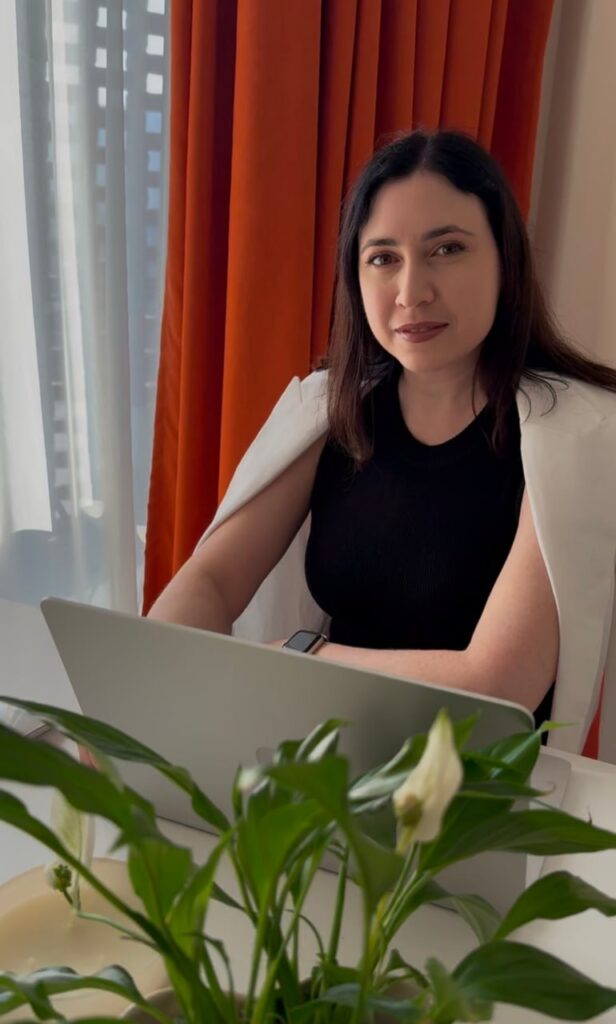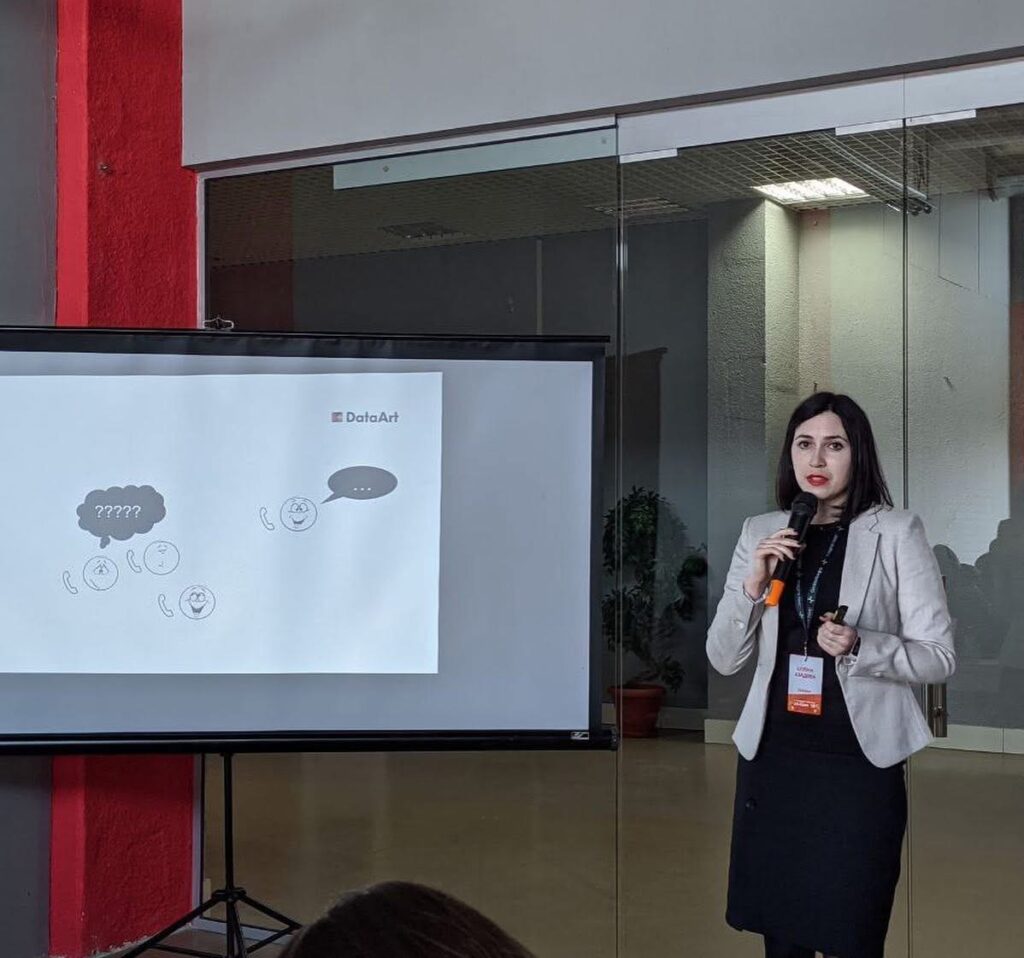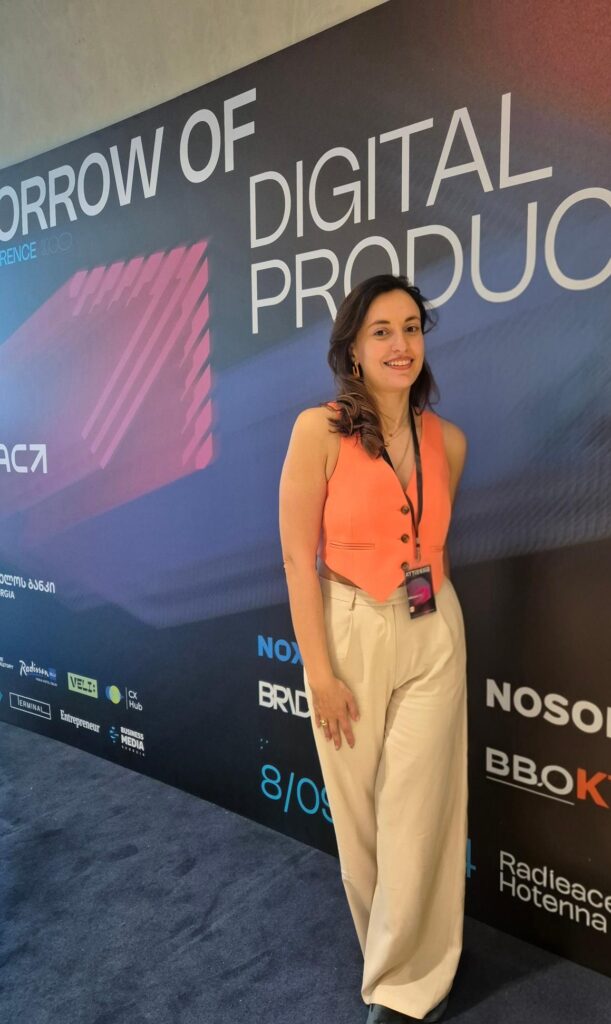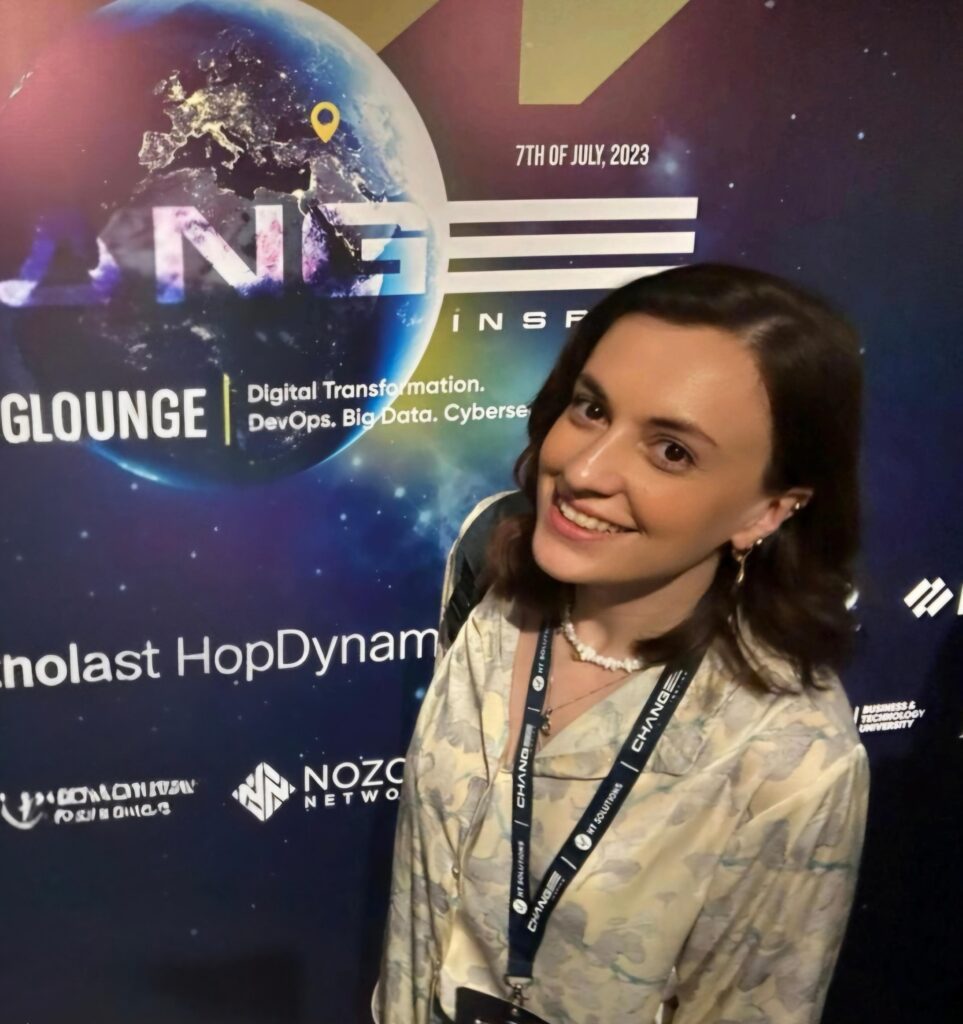WomenInTech. The Stories of two successful women from DataArt Georgia

In a world where women working in technology still face stereotypes and invisible barriers, two professionals from Tbilisi talk about how they paved their own path. Their stories serve as a reminder that success in technology lies in showing yourself, making yourself known, and leading with purpose.
Ellina Azadova, Tbilisi city, QA expert, LinkedIn
About me
I am a QA expert with 13 years of experience in the field. Over the years, I have led QA teams and delivered high-quality solutions for international clients, including projects based in London and New York.
Beyond my core role, I actively mentor early-career professionals starting their journey in QA — often from scratch. I also collaborate with IT schools and conduct hands-on QA courses for international universities.
I am part of Women in Tech initiatives, focusing on supporting and empowering Ukrainian women in the industry. I regularly speak at industry conferences and serve as a jury member at professional IT events.
Certifications I hold:
1. Agile Team Facilitation.
2. Agile Project and Delivery Management.
3. ISO 9001:2015 QMS Internal Auditor.
How I got into IT
I started out as a QA Trainee and worked my way up through different roles, including QA manager and eventually became a QA expert. Along the way, I have worked with diverse teams on a variety of applications, gradually shifting my focus toward quality management and leadership.
What really drove my growth was not just my interest in testing, but also in improving processes and helping teams deliver real value. I have always been proactive — by taking initiative, diving deep into the product, and aligning quality goals with business needs. This mindset helped me move into leadership roles and influence QA practices across entire teams.
I graduated from Kherson State University with a Master’s in Computer Science. My love for computers started in childhood. I was always fascinated by technology — and I still remember my first computer, a Spectrum, which my parents gave me in 1996.
In 9th grade, I decided to make IT my career and enrolled in a vocational school to learn programming. I officially started working in an IT department in 2008. On the very same day I received my second degree, I got an email from someone at DataArt saying they were looking for a QA engineer and that I should apply.
I was not actively job-hunting at the time, but it felt like a sign — so I sent my resume. The next day, I passed both interviews and got the offer. That was the beginning of my journey in QA.

About stereotypes
Before joining an IT company, I went to several interviews for tester and developer roles. Some of the responses I received were shocking. One department head even told me: “You are a woman. Go find a man and get married. You do not need to work in IT”.
It was incredibly frustrating, but I did not let that stop me. I kept pushing forward, looking for better opportunities. That was almost 18 years ago — times have changed since then, but there is still work to be done.
Obstacles for women in IT
Women in tech often encounter outdated stereotypes and societal biases. One of the most persistent challenges is the lack of respect or trust based on the outdated belief that a woman’s place is only in the home. However, women are fully capable of achieving success and fulfillment in other spheres of life — including in their professional careers. Emotional sensitivity — often perceived as a weakness — can actually be a strength, especially when paired with strong analytical skills, which are critical in QA and beyond.
There is also a persistent assumption that women are less reliable professionals because of the possibility of maternity leave. These biases can hold women back from opportunities and make career growth more difficult.
My approach? I do not waste energy trying to prove myself to everyone. Instead, I focus on developing my skills, delivering results, building connections, and being part of the tech community. When you show up and consistently do the work, people take notice — and that speaks louder than anything else.

Recommendations for those who are just starting their journey
Here is what I would tell anyone at the beginning of their journey:
— keep learning — never stop investing in your growth
— value yourself and recognize your potential
— be open to new opportunities — even the unexpected ones
— build your network — surround yourself with others who share your passion
— get involved — stay curious, ask questions, and dig deeper
— do not give up — challenges are part of the path. Keep your goals in sight and stay focused.
Tamar Gobejishvili, Tbilisi city, Lead Business Analyst, DataArt Georgia

About me
I am a Lead Business Analyst bridging three areas: tech, finance, and education. At DataArt Georgia, I guide cross-functional teams through complex fintech projects, using BPMN, structured thinking, and sharp questions to turn ambiguity into smart, scalable solutions.
I also teach business analysis at SEU University, helping the next generation of analysts grow with real-world insight. Whether I am leading a discovery session or running a classroom, my mission is the same: educate, optimize, empower.
I am a certified CBAP and stay active in the BA community through mentoring, workshops, and thought leadership. Outside of work, I enjoy DIY projects — building things from scratch helps me recharge and stay curious.
I began my career in banking, but it was in tech where I truly transformed and found my stride. My first role was in Quality Assurance, where I learned how systems behave under pressure and how details shape outcomes.
That hands-on start laid the foundation for my transition into business analysis. I moved from writing test cases to leading discovery sessions, managing backlogs, and serving as a proxy Product Owner. I was not just documenting — I was translating business needs into scalable, human-centered solutions.
As I took on more complex FinTech projects, I grew into a leadership role: mentoring analysts, setting BA standards, and driving delivery across teams. Today, I also teach the next generation of analysts as a university lecturer.
Each stage sharpened a different skill — QA gave me rigor, early BA work gave me structure, and leadership taught me how to create clarity in complexity. None of it was accidental — I built this path step by step.
How I got into IT
I started in banking as a loan officer — managing credit portfolios, navigating regulations, and learning how to ask the right questions. But I wanted more than routine. I craved complexity, impact, and a space where I could grow quickly. So, I pivoted into tech.
The transition was not easy. I had no shortcuts — just determination, late nights, and a clear sense of direction. I began in QA, mastering systems, testing strategies, and understanding what really makes technology work. That foundation made me a sharper business analyst — and eventually, a leader. Since then, I have worked across fintech ecosystems, led agile product teams, and built solutions that truly make a difference. Today, I also serve as a university lecturer and mentor, helping others break into tech the same way I did — with clarity and courage.
Changing careers was hard. But it gave me exactly what I was searching for: a place where I could build, challenge ideas, and never stop learning.

About stereotypes
I have faced stereotypes — some subtle, others more direct. Early in my tech journey, there were quiet assumptions that I should “stick to the business side” and leave the technical thinking to others.
At one point, I considered moving into frontend development and took courses to build the skills. But colleagues suggested I try design instead because it might be “easier” or “more suited” to me. The message was clear: certain paths are still seen as more acceptable for women — especially those closer to aesthetics than to code.
But I have never been interested in easy. I am interested in impact. That mindset carried me from QA to business analysis to leadership. Today, I mentor and teach to challenge those quiet biases and to help more women claim the technical, strategic roles they are more than capable of owning.
Obstacles for women in IT
One of the biggest challenges women face in IT is visibility — being recognized for their expertise beyond supportive roles. You can speak up, deliver results, and still be overlooked when it comes to strategic decisions or leadership opportunities.
There is also a cultural pressure to be fully qualified before stepping forward. I have seen brilliant women hold back from applying for roles or speaking with authority simply because they did not tick every single box — even when they were more than ready.
I overcame that by choosing to act like a leader long before I had the title. I invested in my skills, stayed visible, and let my work speak louder than assumptions. I did not wait for someone to tell me I was ready — I moved like I already was.
Today, I try to pay that forward. Whether I am mentoring or teaching, I remind women: you do not need permission to lead. Step into it — the recognition will follow.
Recommendations for those who are just starting their journey
You do not need to have it all figured out — you just need to start.
